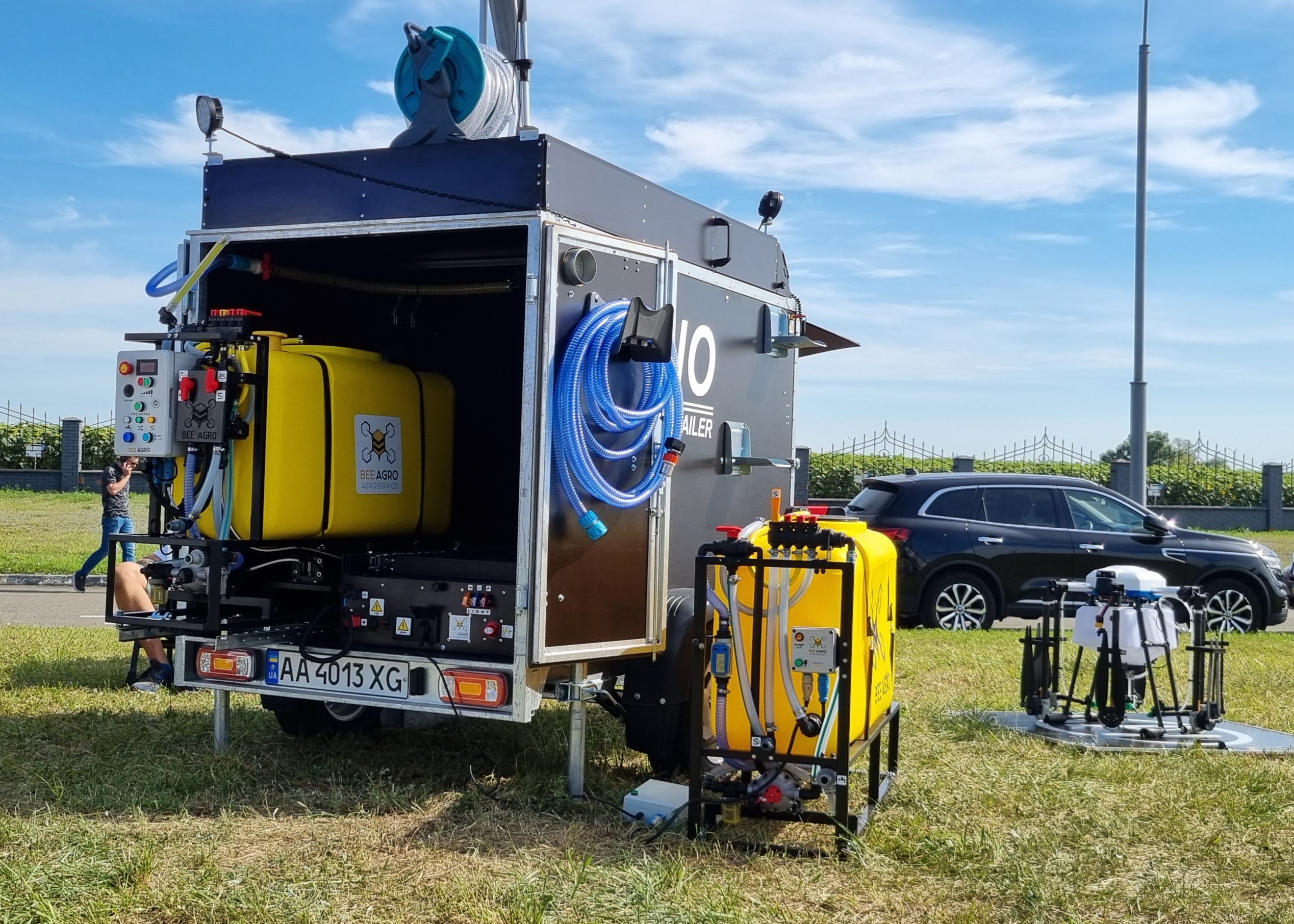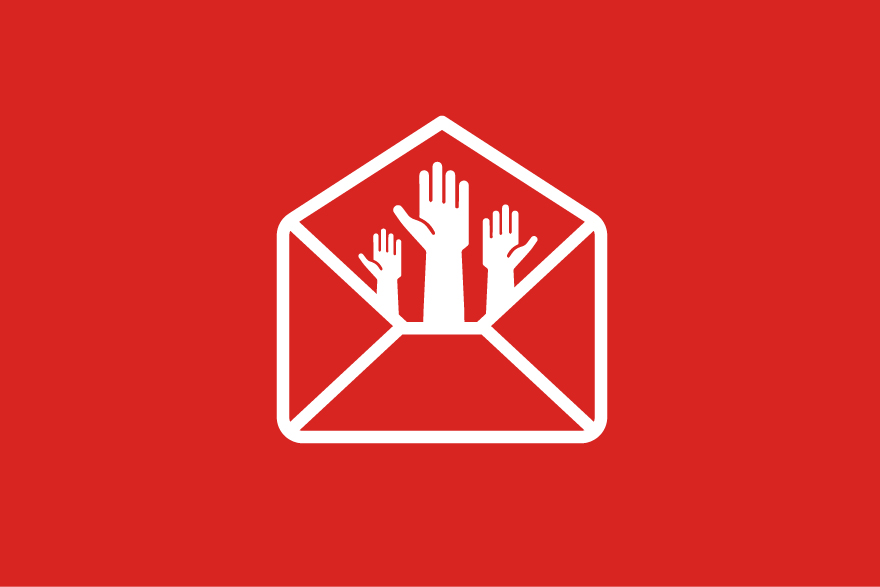
Ukraine’s once pioneering agriculture drone industry is hoping to return to the skies

The large size of its farms and a regulatory Wild West allowed Ukraine to quickly grow into an agriculture drone powerhouse. Restrictions due to the war have killed off growth in an industry that is hoping for a renaissance once the fighting is over.
In 2024, DroneUA, Ukraine’s largest importer and distributor of drones used for agricultural purposes, recorded a turnover of $120 million (CHF99.1 million) from its Ukraine business. Despite the Russian invasion in 2022, the company has been growing steadily but not fast enough for its founder Valerii Iakovenko who is looking overseas for growth.
“At the end of 2021, there was a spike in interest in agricultural drones in Ukraine and we were forecasting a tripling or quadrupling of growth in sales in 2022. But war started and during wartime, you cannot freely use the airspace at all,” Iakovenko told SWI swissinfo.ch.

In 2023, he set up a new company called Futurology in Newton, Pennsylvania where he has extended family. His American operations yielded $15 million in 2024 alone.
“Agriculture business in Ukraine is very difficult right now but we are diversifying our activities waiting for the war to end to boost Ukrainian agricultural operations,” he says.
In the US, his company is benefitting from a nascent industry that is only just taking off thanks to the loosening of requirements for operating unmanned aerial vehicles (UAVs). US Federal aviation regulations used to treat agricultural drones the same as aerial crop spraying aircraft and only recently were exemptions introduced for UAVs. Iakovenko compares the current US market for agricultural drones to what Ukraine had in 2021.
“The whole market in Ukraine was self-regulated starting from 2019. We really enjoyed a large boost for these kinds of technologies and the situation we had in 2021 in Ukraine is actually the exact situation that we see in the United States in 2024 and even 2025. Ukraine was three or four years ahead,” says Iakovenko.
The lack of regulations in Ukraine – like requiring a drone pilot licence or restrictions on spraying toxic pesticides from drones – allowed the sector to grow rapidly. According to Iakovenko, at the end of 2021 there were approximately 1,500 drones spraying fields across Ukraine. Even newcomers got into the act.
“I started my business in 2021 with two drones. I was able to make my money back in a month,” says Mykola Cherniak, CEO of agricultural drone company Agronix. “In Ukraine the law does not tell you what to do but only what you can’t do. This allowed us to experiment with different chemicals and technology and we now have a lot of experience and data.”
Wartime challenges
The industry has been hard hit by the war. This includes procurement problems, dealing with the shelling of infrastructure and power shortages.

In 2021 Cherniak’s company sold about 500 agricultural drones a year but now only sells 100. He cannot purchase new drones anymore and is reduced to selling old stock or used models.
“We are unable to buy drones because companies do not want to sell to Ukraine. They are worried about their reputation and scared their drones will be used for military purposes,” he says.
Two months after the Russian invasion, Chinese firm DJI stopped selling drones to both Ukraine and Russia. The world’s top manufacturer of commercial drones also extended its freeze to its distributors in other countries. While drones can be used for peaceful purposes, such as agriculture or environmental monitoring, they can easily also be adapted for military and surveillance applications.
SWI contacted the Unmanned Systems Forces of the Armed Forces of Ukraine to clarify the legal situation concerning using agricultural drones and whether such drones were being repurposed for military purposes but did not receive a response. An official profileExternal link of an agricultural drone operator indicated that while such drones are not suitable for military use their components can be repurposed for warfare systems.
Cherniak currently relies more on drone spraying services to generate revenue instead of drone sales but even that is shrinking. Last year, his company was contracted to spray 25,000 hectares compared to 40,000 hectares in 2023, a decrease of 37.5%.
Volodymyr Romaniuk, CEO of Bee Agro Aeroservices, remembers how the start of the war put the brakes on his agricultural drone business just as it was picking up. At the end of 2021, he saw an opportunity to expand his services beyond the spraying of crops. He began to produce and sell mixing stations to other companies. Mixing stations measure out agrochemicals and mix them before filling up the drone’s tank. This makes the process of refilling drone tanks safer and more efficient.
“Already in January 2022, before the invasion, we had up to ten prepaid orders. And we began preparations to increase the production of our mixing stations. But already on February 24 (the day the war began), we had to stop and quickly evacuate our families from Kyiv to the western part of the country,” says Romaniuk.

Romaniuk was eventually able to return to Kyiv in June 2022. However, his business has not picked up since.
“Negative factors that affect our activities include the constant shelling of Kyiv’s energy infrastructure which in turn leads to power outages. And this directly affects the production process,” he says.
It is not just Russian attacks that affect business. Defensive measures by the Ukrainian army against Iran-designed kamikaze Shahed drones from Russia can also bring a halt to all drone activity. According to Cherniak, Ukraine deploys radio-electronic battle (REB) units that are electronic warfare communications jammers after Russian strikes. They prevent GPS from working which means agricultural drones cannot fly.
Human resources are also an issue. Every year Cherniak has to train new drone pilots because anyone over the age of 25 can be conscripted by the army. As a result of conscription his company has been forced to employ and train three pilots who are just 18 years old.
“I have a PhD and am a lecturer at a university. I will not be conscripted but my drone pilots are like a gift-wrapped present for the army,” says the 32-year-old entrepreneur.
Development of drone use
The use of drones in agriculture in Ukraine began a decade ago for crop monitoring or surveillance due to the large size of the farms. According to the World Bank, there are around 10,000 corporate farms in Ukraine with an average size of 1,650 hectares, with 55 agricultural holdings as big as 510,000 hectares.
“We are talking about small drones sold on the shelves of supermarkets that are capable of filming the situation of the field from above. The drones are not mapping but simply allow us to see parts of the field that were previously unseen from the ground,” says Iakovenko.
The market subsequently evolved and from 2019, drones were used not just to detect damage from weather, pests and disease but also react to them. One of the first large-scale uses of agricultural drones was for the dessication of crops such as sunflower by spraying herbicides like glyphosate. This kind of spraying kills the plant and dries it out, making it cheaper to harvest and transport.
“When we started in 2021, 80% of agricultural drone services were used for dessication of rapeseed, sunflower and some corn. Now drones are used to spray insecticide on corn and fungicides on sunflower, rapeseed and soybean,” says Cherniak.

According to Iakovenko, the advantages of spraying by drone are not so much the cost – in 2021, the cost of spraying was in the range of $10-$12 per hectare, VAT included, the same as that of conventional machinery – but being to intervene at any time.
“For example, two hours after the rains, we can spray protective fungicides instead of waiting four or five days for the field to dry out. Sometimes the harvest was lost on the ground just because the machinery was not able to enter the field. Drones in agriculture are like an emergency service, like ambulances for the field to save the crop from total destruction,” says Iakovenko.
Farmers in need
Despite martial law restricting airspace use, Ukrainian farmers can still use drones to spray their crops. But they need special permits or waivers.
“It takes time and human resources to apply for them and in some regions requests for these waivers are being ignored. Those in charge do not understand how critical this service is for farmers,” says Iakovenko.
Ukrainian farmers in financial difficulties have received some help from abroad. A USAID-funded project called Agriculture Growing Rural Opportunities or AGRO, has enabled Ukrainian farmers to continue using drone services. Former USAID Administrator Samantha Power herself visited the beneficiaries of the drone spraying services in 2023 as a show of support for Ukrainian farmers. The programme has survived the freeze of USAID projects by the Trump administration.
Swiss drone technology company Pix4D is helping keep Ukrainian agricultural drone operators afloat by offering free licenses for their technology.
“We dealt with Pix4D for at least seven or eight years and are their major partner in Ukraine. They provided huge support for Ukrainian farmers and for the emergency services providing free licences for all the players, all the market,” says Iakovenko.
The Swiss company confirmed its continued commitment to Ukraine’s farmers.
“Indeed we continue supporting Ukraine, including extending free licenses,” says Andrey Kleymenov, CEO of Pix4D.
Down but not out
The entrepreneurs SWI spoke with remain optimistic for the future of agriculture drones in Ukraine.
“Ukraine is still the largest agricultural drone market in Europe even though it has plateaued. And we are still one of the biggest markets in Europe regarding the sales of spare parts for drones,” Iakovenko says.
The country is still more advanced than the rest of Europe because of the limitations imposed by the European Union’s Sustainable Use of Pesticides Directive. In its current form, the EU directive bans any aerial spraying of crop protection products. Special permissions may be granted for specific use cases like spraying on steep slopes in vineyards but are difficult to obtain and can take time.
“With the right framework in place, the drone services market in Europe could by 2030 reach a value of €14.5 billion, with a compound annual growth rate of 12.3%, and create 145,000 jobs in the EU,” stated the European Commission in its Drone Strategy 2.0 communique in 2022.
Switzerland was the first country in Europe to develop a regulatory framework for spraying crops with drones in 2019. According to a survey conducted by the Swiss agricultural institute Agroscope, the total area sprayed by drones in the country reached a peak of 846 hectares in 2023.
More than half of the treated area (472 hectares) were vineyards and it is estimated that 11.5% of Swiss vineyards by area were sprayed by drones in 2023. Most of these treatments involved fungicides.
Other uses of agricultural drones include spraying slug pellets on field crops such as sugar beets, sunflowers, potatoes or rapeseed (185 hectares), as well as weed control with herbicides in meadows (80 hectares). Drones are also used to release parasitic wasps (Trichogramma evanescens) over 36 hectares of corn fields to control the spread of moths.
If the European Commission’s drone friendly vision for 2030 becomes a reality, Ukrainian firms could potentially find a ready market for their expertise and experience. Some like Romaniuk already have a foothold on the continent.
“Despite the threats and risks, starting in mid-2022, we managed to enter the European markets with our own products. At the moment, we have partners or sell directly to the end customer in countries like Moldova, Romania, Greece, Bulgaria, Poland, Slovakia, Hungary, Sweden, Czech Republic, Spain and the United Kingdom,” he says.
Furthermore, Ukraine is a military drone superpower. Last year, Ukrainian manufacturers produced 2.2 million FPV (first-person view) drones and the target for 2025 is 4.5 million FPV drones. Some of that scaling up will inevitably benefit the agricultural drone sector when the conflict ends.
“Ukraine is the largest drone manufacturer in the world. We are manufacturing more drones than China and we have tens of thousands of drone operators in the country. After the end of martial law, they will need to switch from the defence side of the business to some kind of commercial use,” says Iakovenko.
Cherniak is hopeful that businesses like his will be able to cash in on an opportunity of a lifetime.
“I believe about 5% of the million-strong Ukraine army can become agricultural drone pilots. I will have all right cards once the war ends as I have all the knowledge and infrastructure,” he says.
Edited by Virginie Mangin/dos

In compliance with the JTI standards
More: SWI swissinfo.ch certified by the Journalism Trust Initiative




























You can find an overview of ongoing debates with our journalists here . Please join us!
If you want to start a conversation about a topic raised in this article or want to report factual errors, email us at english@swissinfo.ch.